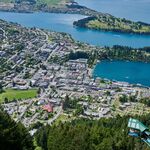I share the same concern Dan. I'm unimpressed by what product we're getting, and I genuinely don't see how an LRT will work out in the long term on Eglinton.
[...]
That being said, I'm glad this is being built. I just wish there weren't so many compromises made for this line. I don't think it's inaccurate to say it's going to potentially create more problems down the line with the expansion going on westbound.
I do think Line 5 Eglinton is definitely underbuilt for future ridership 10+ years away. Might even be overcrowded sooner.
However, I am also a big proponent of "if you build it, they will come". Since we evidently did not build it, densification like what we have seen along Bloor and south of Bloor will likely never materialize to the same level (barring a rebuild of Line 5). Ironically, this will dampen Eglinton's future transit demand and capacity issues if any. The skyscrapers along Line 4, many of which were built nearly two decades after Line 4 opened, are evidence that rapid transit access can serve as the cause rather than just the effect of densification and growth.
The long-term ramifications of having a not-so futureproof transit line on Eglinton is that it will be relegated to having a lower limit on future densification, job growth etc... Midtown NIMBYs rejoice. Once the transportation infrastructure along Eglinton becomes saturated, further urban development will move to other corridors and nodes that may have higher capacity
eventually (i.e. Sheppard with extensions, Lawrence Ave if it gets a subway in the far-far-future).
Just based on
current density, distance from Line 2 and Ontario line, and the fact UofT campus has 100,000 people every day, College-Carlton should have a short subway, Dundas West to Gerrard station ~9km. But because the Carlton streetcar exists, among other reasons, the corridor will not see nearly the same densification as Bloor or North York Centre. The density is lower than subway corridors, so the city is content with anemic streetcars. The streetcar is anemic, so density won't increase much. Obviously zoning comes into play as well. Low density housing near College and Carlton is rarely seen in any other city's downtown with the same density as Toronto, and likely will stay that way for the foreseeable future.




